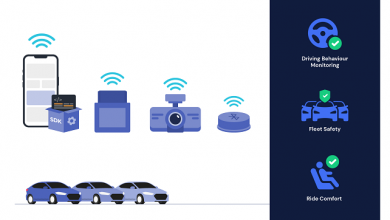The future of mobility: Transforming it to ‘Smart’ and ‘Shared’

In recent years, several studies and research reports have uncovered how younger generations have the power to shape and influence the future of transportation. Gen Z, born between the mid-1990s and 2010, make up about 32% of our current global population. This is a generation that knows life with technology, relying heavily on apps and services to get their work done and the way they travel.
However, it’s not just their ease with connected technology that is changing the way they view transportation. In comparison to previous generations, Gen Z and Millennials are more socially and environmentally aware. There’s a shift from ‘Me’ to ‘We’ culture, according to the ‘The Birth of Mobility Culture’ study by Allison+Partners.
Closer to home, 51% of Millennial Indians are questioning their need to own a car. This can be attributed to one reason revealed by a Deloitte study – trust in digital solutions for their commutes.
Over the years, there has been a gradual move to shared mobility as a sustainable form of transportation, especially in urban areas. This evolution highlights how it’s a revolutionary concept, empowering people to travel efficiently and safely and the transition was possible because of Smart Apps.
With a smart app, a user can plan their end-to-end journey, book vehicles and trips in real time with gateway payment services, either as a monthly subscription or a pay-as-you-go feature. It’s this flexibility that’s drawing users in and prompting them to make the switch to shared mobility.
When a user decides to choose this experience, they’re accessing a plethora of features to make it as seamless and efficient as possible. Integrated technology like IoT, geo tagging, geo fencing, tracking software, GPS, secure payment gateways coupled with smart locks, reward points, real-time tracking, push notifications, super apps, promo codes, discounts, reward points make this almost irresistible to the end user.
This convergence of smart mobility and technology is creating disruptions in transportation with several partnerships and schemes in the public-private arena. It’s led to public bike sharing schemes, smart mobility projects for electric mobility, battery swapping stations, docking stations, and shared mobility pick-up zones.
Adoption of smart and shared mobility goes beyond the efficacy of the technology. What makes it desirable to users is access and ability to surpass liabilities with owning a vehicle. For instance, driving your own vehicle has reduced economic benefits when you consider surging fuel costs, insurance, and maintenance costs. It comes with other challenges like lack of parking spaces, traffic congestion, and pollution.
These collective challenges, whether economic or environmental, have acted as a catalyst for the shared mobility industry, making it a much more enticing alterative. A recent Shared Mobility Market research report revealed that is expected to grow at a CAGR of 15.42% and is anticipated to reach around USD 238.03 Billion by 2026.
For a user, the options offered by shared mobility transport systems are extraordinary:
- Autonomous vehicles
- Bus shuttle
- Car sharing
- Bicycle sharing (also known as PBS or public bicycle sharing)
- P2P bike sharing
- P2P vehicle sharing
- High-tech company shuttles
- e-Scooter sharing
- e-Auto sharing
- Micro transit
- Vanpools
- Community buses and vans
In addition to this, technologies like RM- Personal Rapid Transport, GRT- Group Rapid Transport, ATN- Automated Transit Networks and APM- Automated People Networks are being implemented at software parks, corporate campuses, SEZs, and airports for increased convenience.
This adoption has also led to ride sharing companies, who use MaaS or mobility as a service. It’s deployed through an app, allowing users to plan, book, and pay for multiple mobility services. MaaS was intended to customize and offer travelers services based on their travel needs, where physical trips are now substituted with virtual trips.
In India, shared mobility platforms through apps started in early 2013, marking its presence first in Bengaluru and slowly moving towards other cities. While the initial phase wasn’t promising, there was a change in consumer behavior because of the city’s unreliable and unpredictable modes of transportation. This also paved the path for bike sharing, with Bangalore grabbing the largest market share in this space. Slowly, we’re witnessing electric bikes replacing fuel-run bikes, due to increasing fuel costs, fuel siphoning, and misuse of these vehicles. IoT/ GPS based electric bike sharing is gradually coming in the arena which will overtake the regular transportation models. Due to the high usage of bike share, India is considered the “Bike Capital” of the world. Two wheeler shared mobility is gaining traction because of affordability, availability and convenience. Shared mobility as per NITI Aayog is ‘Any mode of transportation that is shared by users on a as-needed basis, from bikes to 4-wheelers to mass transit can constitute shared mobility.’
Another area within this industry is mobility on demand, which has been incredibly useful for travelers to move from city to city. It combines traditional transportation with private enterprises to create a single mobility service. This has been picking up pace with various government agencies collaborating with mobility players to launch innovation solutions, both public and private, to reduce the distance between the origin/destination to transit station/stop, also known as the first or last mile connectivity. It’s a viable alternative for travelers who frequent suburban or metro transportation modes like MRT, public buses, metro rail, and suburban rail.
On-demand mobility allows ease in transportation to business districts, tech parks, corporate offices by improving and optimizing linkage to mass transit systems/ services with a dedicated pick up and drop zone as designated by authorities.
However, it’s crucial to point out the challenges faced by this ecosystem and the solutions it pumps out. While most Gen Z and Millennials are quick to adapt to change, there will be those who are reluctant to the rapid pace of smart mobility. It’s important to also factor in infrastructure enforcement and various economic factors that could possibly hamper this growth.
The reason smart and shared mobility continues to make leaps in the market is because it’s a revolutionized business model. Its function has evolved through the years, and even more so with technology. With the dawn of 4G, we moved from physical hailing of transportation to twiddling our thumbs on an app, which is efficient, safe, and comfortable.
This growth is expected to be exponential with 5G technology, which will create a solid foundation for faster connectivity, improved navigation, and smarter innovation with cloud and edge computing. The deployment of this technology increases and supports augmented of interconnections and uninterrupted data exchanges with rapid digitalization of smart mobility.
The next new thing to look out for is Hybrid-electric vertical takeoff and landing eVTOL aircraft, which has been deemed the mobility of tomorrow. The probable integration of take-off and landing areas is gaining importance in cities across and capitalizing on this will transform the air taxi segment and pilot projects, which are already underway for HNIs/ UHNIs.
Intelligent Transport Systems (ITS) provides transport solutions by utilizing state-of-the-art information and telecommunication technologies for a smooth transition of vehicles and transportation. Smart mobility is to achieve traffic efficiency by minimizing traffic problems, also it is an intelligent system of connected roads and vehicles in which we see that smart mobility includes real time information services, smart vehicle charging, sophisticated intelligent corridors, electronic toll collection, computerized and digital signaling. Safe, efficient and environmentally sound mobility will change and improve vehicle and infrastructure safety, enabling smooth and comfortable transportation. Smart mobility encompasses high-tech upgrading of infrastructure which could help bypass existing situations in road networks, providing safer and faster mobility.
Micro transit is another shared mobility system which means real time routing/ flexible routing and a tech enabled shared mobility, on demand transport serving low density population areas. Virtual bus stops are created for pick up and drop facility for the users. Micro transit is moving towards changing cities in a positive direction and transporters have offered services to urban and rural areas with a high tech touch to it. Due to their compact and small sized transportation vehicles it costs less to maintain and quicker to transport people. Online booking, pre-booking, monthly or weekly booking makes micro transit effective in particular areas where other transportation models doesn’t. It also allows public private partnerships to collaborate their expertise. Dedicated micro transit systems can assist in school/ college commute, office pick/ drop. Micro transit systems also allows decongestion of busy corridors and saving commute time, feasibility and economical for the passengers.
Smart cities are the next step towards smart shared mobility because of promotion of sustainable development practices, smart city eco-systems, intelligent road systems, connected cities, digital deployment, optimizing infrastructure, real-time data management, decentralized decisions and actions, secure wireless connectivity, public safety monitoring systems, next generation intelligent platforms, GPS Face recognition cameras, superior air quality monitoring, high tech vehicle identification systems, speed control radars and many other ways and means to improve the quality of life. India’s Smart Cities Mission leads to drive economic growth, quality of life, sustainable and inclusive development with 100 cities being selected as Smart Cities which adds as a booster development for smart shared mobility. The FAME India – Phase II of the National Mission on Electric Mobility is an ambitious programme by Government of India with greater emphasis on providing affordable & environment friendly transportation for the masses which in turn assists in the shared mobility space.
In India alone, the shared mobility market was valued at $1,025.8 million in 2019 and is expected to grow at a CAGR of 56.8% during the forecast period (2020–2025).
The world is changing and so is the way we view transportation, and only way to keep up is with ‘Smart and Shared Mobility’.
Author :

Mr Jude Nash
Founder/ Director
eMatrixmile India Pvt. Ltd.
Jude Nash is the Founder/ Director of QYK Bike based out of Mumbai, India. QYK bike is an Electric Scooter Rental company with focus areas on the Public bike sharing scheme, Point to point docking stations and other shared mobility options in India. Jude leads the Technical/ IT/ IoT/ APP space of QYK bike.
Published in Telematics Wire





